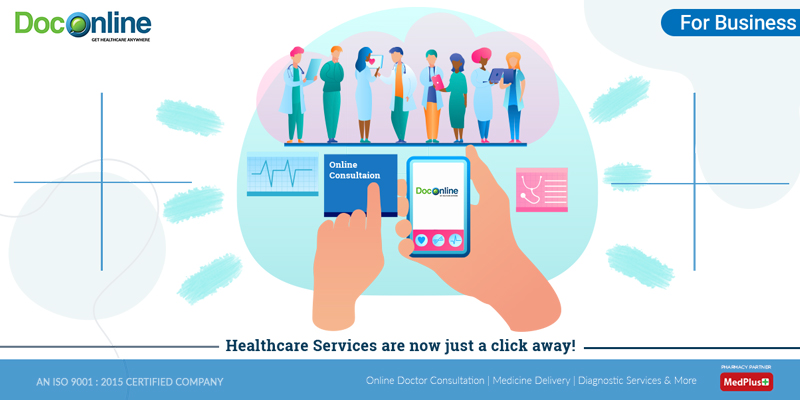Discover the Perks of Subscription Based Healthcare for Affordable Medical Care
Discover the Perks of Subscription Based Healthcare for Affordable Medical Care
Blog Article
Understanding the Cost-Effectiveness of Subscription-Based Medical Care Models
As the medical care landscape develops, subscription-based designs become a compelling alternative, guaranteeing to redefine exactly how people handle clinical expenses. Examining these versions' cost-effectiveness necessitates a nuanced contrast with typical insurance coverage, taking into consideration both financial implications and patient fulfillment. While they use transparency and predictability in expenses, questions remain regarding their ability to meet diverse medical care demands, specifically for specialized treatments. The point of views of doctor better complicate this formula, offering a multifaceted challenge. What does the future hold for these designs, and can they absolutely deliver on their guarantee of easily accessible, cost effective treatment?
Overview of Subscription-Based Models
Subscription-based health care versions, in some cases referred to as straight health care or concierge medication, are progressively acquiring attention as a potential service to inefficiencies within typical health care systems. These designs operate the concept of offering clients direct access to medical care companies through a monthly or annual cost, bypassing the demand for conventional insurance policy systems. This arrangement intends to streamline patient-provider communications by decreasing management concerns, which commonly hinder tailored and timely treatment.
At the core of subscription-based models is the emphasis on a more individualized person experience. Patients take advantage of enhanced access to their doctors, often consisting of same-day or next-day consultations, extended appointment times, and direct interaction networks such as phone or video telephone calls. This model fosters an aggressive technique to medical care, where carriers and patients can collaboratively concentrate on preventative treatment and chronic disease management.

Expense Comparison With Traditional Insurance Coverage

One of the main monetary advantages of registration versions is openness in costs. People pay a foreseeable charge, which can streamline budgeting and financial preparation. Additionally, these designs commonly eliminate co-pays and deductibles for protected services, decreasing out-of-pocket investing. Conversely, conventional insurance coverage might be extra beneficial for individuals calling for specialized treatment or costly therapies not covered under a subscription design, as they gain from the more comprehensive protection network and cost-sharing mechanisms.
Nevertheless, cost-effectiveness is context-dependent. While membership models might provide financial savings for those primarily needing key care, people with chronic problems or specialized medical care demands might discover typical insurance coverage more comprehensive. Therefore, evaluating specific health care needs and potential use is important in establishing the most affordable option for individuals.
Influence On Patient Contentment
Individual complete satisfaction within subscription-based healthcare models usually reflects a considerable enhancement over standard insurance systems. Unlike typical systems, where clients may experience delays in obtaining treatment, subscription-based versions make sure even more timely and straight interactions with medical care service providers.
In addition, the openness in prices associated with subscription-based healthcare minimizes the common stress connected to unforeseen costs and complex payment procedures seen in standard insurance (subscription based healthcare). People value understanding the precise economic dedication upfront, leading to boosted count on and confidence in their medical care management
Additionally, the focus on preventive care and health in membership designs adds to enhanced health end results, additionally improving client complete satisfaction. By concentrating on continuous health and wellness maintenance instead of episodic treatment, individuals experience an even more continuous and all natural healthcare journey.
In addition, the boosted provider-patient relationship fostered in these models, characterized by even more time invested per person and individualized focus, plays a vital role in boosting individual fulfillment degrees, as patients feel truly taken care of and understood.
Service Provider Viewpoints and Experiences
From the provider's point of view, subscription-based healthcare designs supply a transformative approach to supplying clinical services. These models emphasize a aggressive and preventative health care strategy, permitting companies to focus on comprehensive patient care without the restraints of typical fee-for-service arrangements (subscription based healthcare). This change in emphasis often results in boosted individual results and boosted company complete satisfaction, as health care specialists can designate more time and sources to client interaction and personalized treatment plans
Moreover, membership versions help with foreseeable profits streams, which enhance financial stability for health care providers. This predictability allows for boosted resource preparation and allocation, adding to a much more efficient medical care delivery system. Companies can invest in staff modern technology, framework, and training renovations, thereby enhancing the top quality of treatment offered.
Nonetheless, the change to subscription-based versions is not without difficulties. Companies should adjust to new functional frameworks, which can entail substantial changes in invoicing practices and individual management systems. Furthermore, there is a browse around this site fundamental need for robust information management to track client outcomes and make certain quality treatment. Regardless of websites these difficulties, many carriers locate that the advantages of boosted individual communication and structured operations outweigh the first obstacles, making subscription-based versions an attractive choice.
Future Prospects and Obstacles

A primary challenge is regulatory compliance, as membership versions have to stick to evolving health care plans and insurance coverage demands. This demands continuous adjustment and development to make certain positioning with lawful criteria. In addition, incorporating these designs into existing healthcare facilities can be complex, needing considerable financial investments in innovation and training.
There is likewise the possible risk of creating injustices in healthcare access, as subscription versions might favor those that can manage them, leaving vulnerable populaces underserved. Resolving this needs thoughtful consideration of prices methods and aid mechanisms to make sure inclusivity.
Final Thought
Subscription-based health care designs present a feasible option to standard insurance coverage by supplying monetary predictability and transparency, especially profiting individuals with persistent problems or constant healthcare requirements. The cost-effectiveness of these models is contingent upon individual health care usage patterns and circumstances. While they may boost client fulfillment and improve budgeting, obstacles continue to be in attending to specialized treatment demands. Future factors to consider consist of balancing extensive insurance coverage with affordability and integrating these models within the broader health care system for ideal outcomes.
Subscription-based medical care versions, occasionally referred to as straight his explanation key care or attendant medication, are increasingly acquiring interest as a potential solution to ineffectiveness within standard healthcare systems. Unlike standard systems, where clients might experience hold-ups in obtaining care, subscription-based models guarantee even more timely and straight interactions with medical care service providers.
These models highlight a proactive and preventative healthcare approach, permitting service providers to concentrate on comprehensive client treatment without the restraints of standard fee-for-service arrangements. As these designs continue to gain grip, they supply the prospective to transform person accessibility to care, enhance solution shipment, and maximize medical care spending.Subscription-based health care versions provide a feasible choice to typical insurance by using monetary predictability and transparency, specifically benefiting individuals with persistent problems or frequent medical care needs.
Report this page